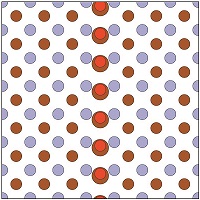Importance of diffuse scattering for materials science
 The properties of many technological important materials are intimately associated with the inherent disorder that exists in their crystal structures. There are numerous examples in the fields ranging from alloys, shape-memory alloys, ferroeletrics, fast ion conductors and semiconductors to high -Tc superconductors and even pharmaceuticals.
The properties of many technological important materials are intimately associated with the inherent disorder that exists in their crystal structures. There are numerous examples in the fields ranging from alloys, shape-memory alloys, ferroeletrics, fast ion conductors and semiconductors to high -Tc superconductors and even pharmaceuticals.
To understand these materials it is not sufficient to know their average unit-cell structure as revealed by Bragg scattering. It requires additionally knowledge of their local or nanoscale structure – information that can only be obtained from the diffuse scattering component of the total scattering. Obtaining such diffuse scattering data is now feasible for most crystalline materials, however interpreting and analysing the data remain problematic. There have been some attempts to make the analysis of diffuse scattering more routine and more readily available to a wider range of researchers but, in most cases the modelling still relies heavily on the experience of the investigator.
In view of the limitations of the current models, Welberry and Goossens [(2016). IUCrJ. 3, doi: 10.1107/S2052252516010629] decided to undertake a study to try to develop a new model that agrees more convincingly with observed data. Their paper re-examines results published by an earlier team and demonstrates how to analyse the diffuse scattering of experimental diffraction patterns.
A related commentary to this paper exists: Sawa, (2016). IUCrJ. 3, doi: 10.1107/S2052252516013889

